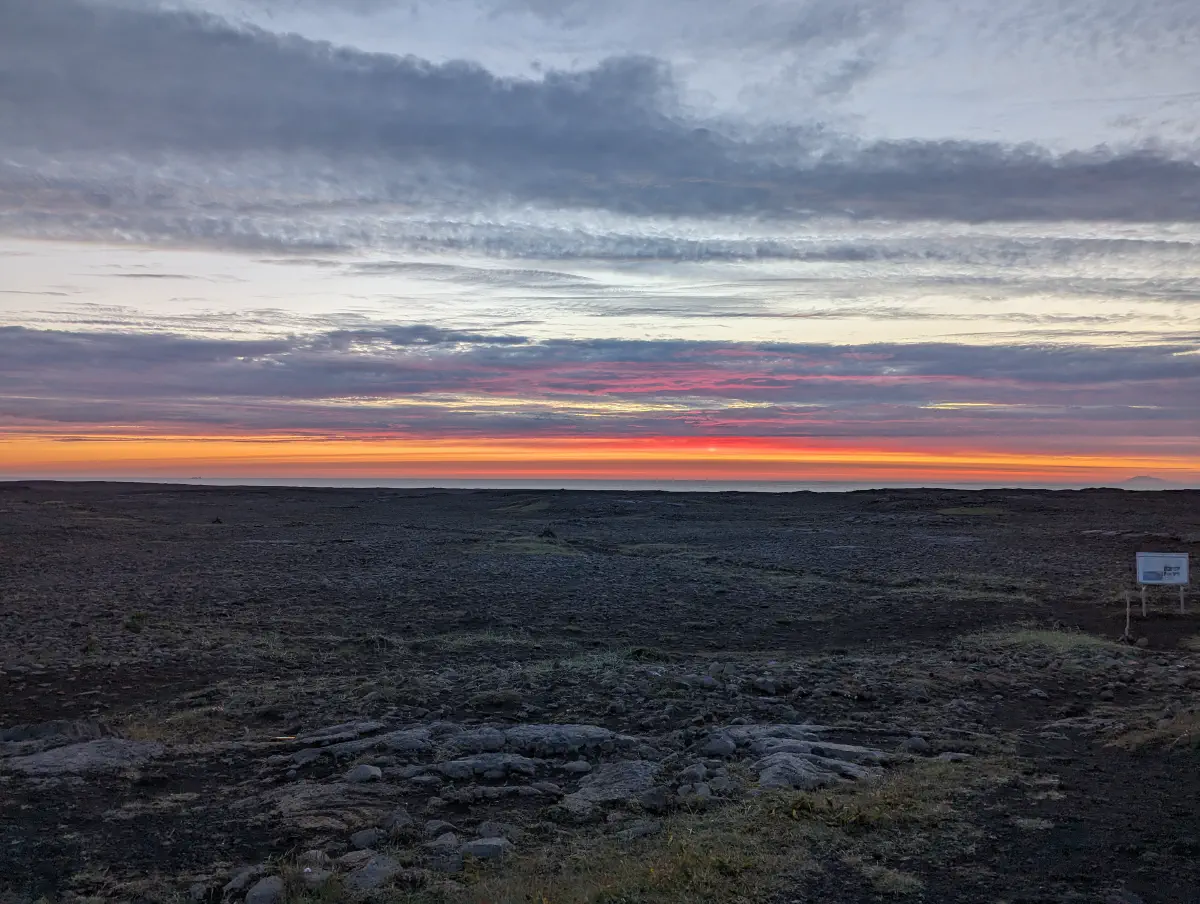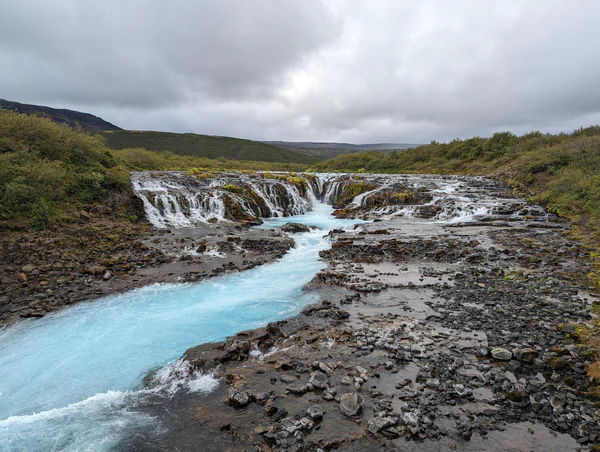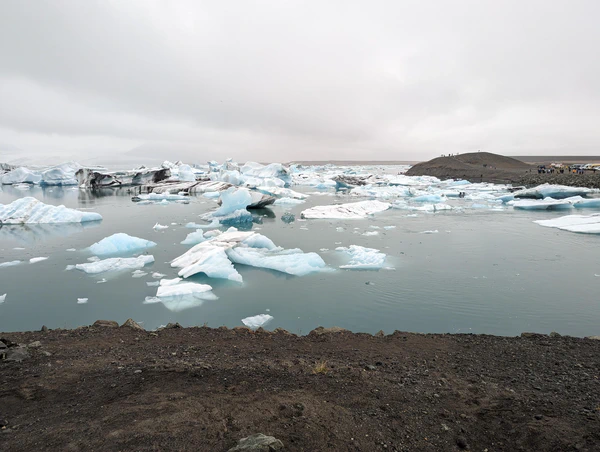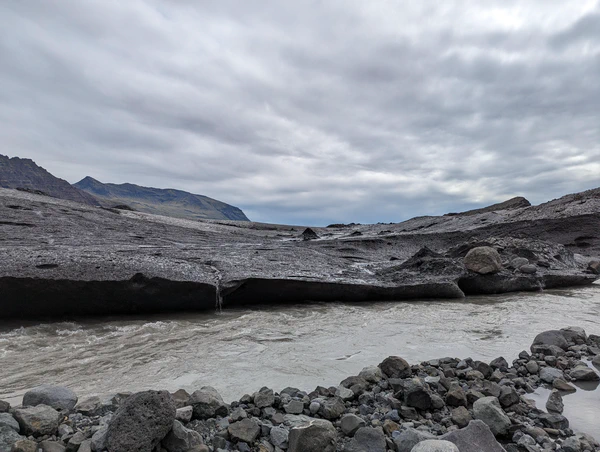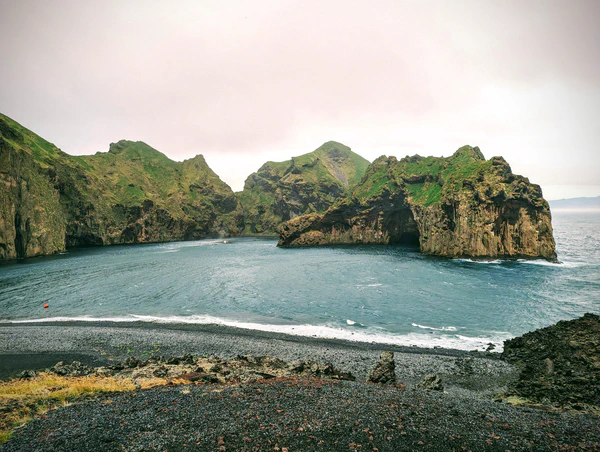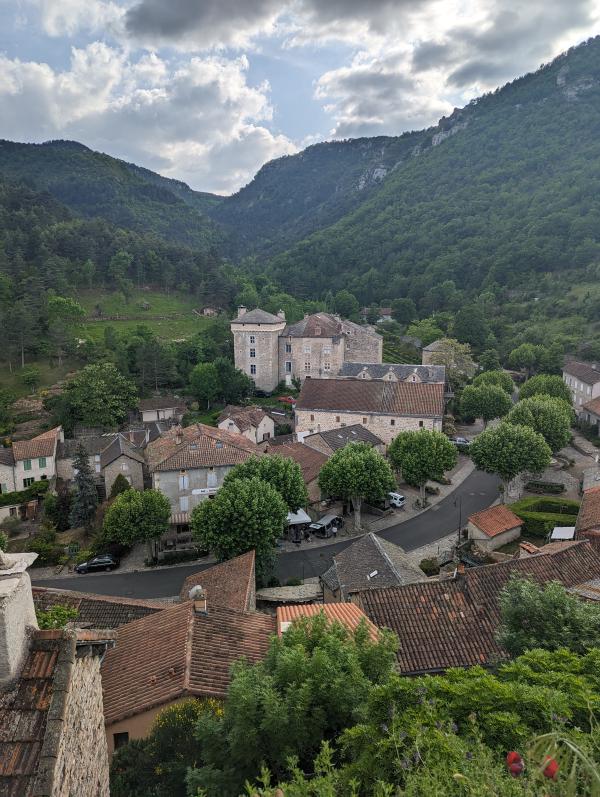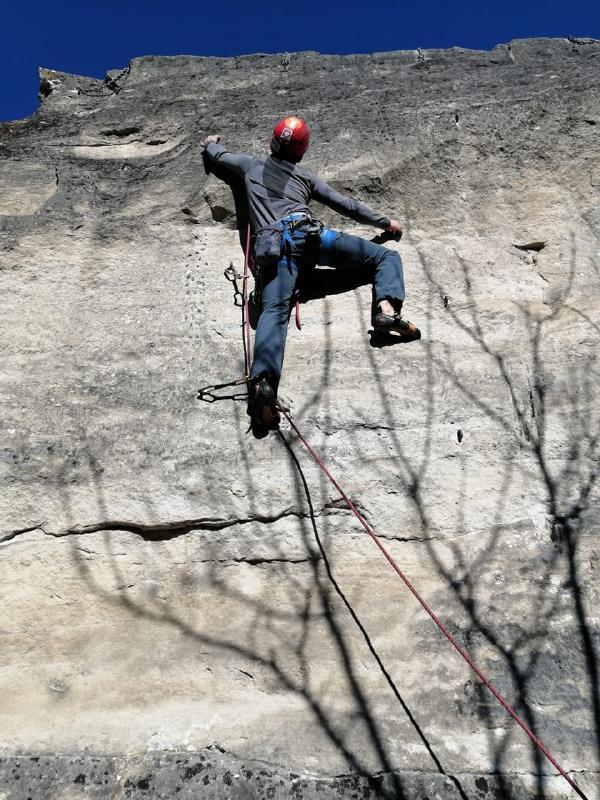My girlfriend and I decided to spend a week in Iceland this summer. For this first trip to the country, we chose to concentrate on the south, so as not to spread ourselves too thin.
To free ourselves from a lot of constraints, we decided to rent a van, so we could sleep wherever we wanted.
Please note: it’s forbidden to sleep anywhere in Iceland. You have to sleep in campsites, which are areas set aside for travelers. They can be found all over the country. The good news is that it’s generally not necessary to book a campsite in Iceland. All you have to do is settle in and pay at reception.
Vehicle#
For our trip to Iceland, we opted for the smallest van offered by the company Kukucampers. It was a converted Dacia Dokker 2-wheel drive, which means it can’t take F roads.
The van was equipped with the essentials for cooking, eating and washing up: crockery, a gas stove, cooking utensils and cutlery. We also took comforters, pillows, a gas cartridge and a 10-liter water tank.
We regularly topped up the water tank at filling stations.
The van was well insulated enough to sleep well, although the temperature could drop considerably at night. It was still a bit chilly when we woke up, but we had our warm comforters.
Route#
Day 1: Paris evening departure and arrival at Keflavik#
Day 2: Arrival at the Snæfellsnes peninsula and night at Secret Campsite#
After waiting far too long for the rental agency to open, we were finally able to do the paperwork and pick up our van after a briefing.
Despite our early departure from the airport (8 a.m.), we didn’t hit the road until late morning, around 11 a.m., initially to do some shopping for the trip.
We continued on our way to the Snorrastadir Farm Holidays campsite. From there, we hiked up to the Eldbord crater.
At the end of the day, we took a break on the beach at Ytri Tunga to observe the seals, of which there were many.
We ended our day with a visit to the Lýsulaugar swimming pool, where we could relax in the warm water. We then slept at Secret Campsite, a rather rustic but charming campsite: there are no showers, and you have to pay cash!
I fell asleep safely after a rather high number of sleepless hours for me.
Day 3: Peninsula visit and night in Vatnskot#
We began our day with a visit to the Lóndrangar cliffs, a magnificent cliff landscape, before setting off to climb the Saxhóll volcano. The climb takes just ten minutes from the parking lot and offers a breathtaking view of the region.
We stopped off at Svöðufoss. This waterfall, near Rif, is remarkable for its pyramidal shape. We were able to admire it up close, from a path that leads to the foot of the waterfall. There is also a path leading up to the top.
After a lunch break at the Reks restaurant in Ólafsvik, we continued on to the Kirkjufellsfoss waterfall. Unfortunately, it was very busy with tourists. Nevertheless, we stopped to admire it.
Next, we attempted to climb Mount Kirkjufell, a 463-metre-high mountain that served as the backdrop for the Game of Thrones series. We stopped at the first rope (there are three in all) to avoid taking any risks. We didn’t come across any groups of hikers who had reached the summit.
We ended the day by settling into the Vatnskot camp. This has a common room for cooking and eating, as well as toilets. Showers are at the main camp.
It was a long day and we arrived at camp very late. On the way, we booked the first snorkeling slot in the Silfra Fault the following morning.
Day 4: Snorkeling, geysers and waterfall#
After an early wake-up call, we make our way to the rendezvous point for our morning activity: snorkeling in the Silfra fissure, a normal fault between the North American and Eurasian tectonic plates. This fault is underwater, which is between 2 and 4°C.
For this activity, we went through Dive.is.
We equip ourselves with thermal underwear, a thermal under-suit and a fully waterproof wetsuit. To this we add gloves and a balaclava. Only our hands and face will get wet during the dive.
Visibility is excellent, we can see up to 100 meters. It’s quite majestic. We marvel at the beauty of the fault, which is lined with volcanic rock. We stay in the water for about 40 minutes, enjoying the moment.
Back at the main camp, we enjoy a hot shower and prepare a meal.
In the late afternoon, we head east. We stop at the Brúarárfoss waterfall, set in a narrow gorge. We are then impressed by the Geysir geysers, including Strokkur, which erupts every 5 to 8 minutes.
We settle in at the Skjól campsite, where we meet up with two Frenchwomen we had met at the airport. We spend a pleasant evening in their company.
Day 5: Waterfalls and lagoon#
When we wake up, we head for Gullfoss, one of Iceland’s largest waterfalls.
The view is breathtaking. We take in the view despite the rain, then head for the Secret Lagoon.
The Secret Lagoon is a natural hot-water pool set in a lava field. We arrive just before noon, and the place is already busy. We undressed and plunged into the warm, relaxing water.
Overall, we preferred our small pool on Day 2. Indeed, the small pool on day 2 was quieter and more intimate. But the Secret Lagoon is a unique experience in Iceland.
We set off again for the Seljalandsfoss waterfall. Seljalandsfoss is a 60-metre-high waterfall. It’s possible to walk behind the waterfall, which gives you a breathtaking view of the torrent of water. You’ll come out pretty wet, but it’s magnificent.
We then walk for a few minutes to reach Gljúfrabúi waterfall. Gljúfrabúi is a waterfall hidden in a cave. To reach it, you have to walk a few meters through a narrow canyon.
The waterfall is even more impressive than Seljalandsfoss. We marvel at the beauty of this natural landscape.
After a short drive, we reach the Skógafoss waterfall. Skógafoss is a 60-metre-high waterfall. We climb the stairs to reach the top, from where we have a breathtaking view of the waterfall and the valley. Other waterfalls can be seen further up the path, but we didn’t stay long.
We finally reach the Vik campsite and take a stroll along the beach to end the day. Vik’s beach is black sand, bordered by steep cliffs. We stroll along the beach, admiring the sunset over the ocean.
It was an emotional day. We were lucky enough to discover some magnificent landscapes, and had an unforgettable time in Iceland.
Day 6: Glacier and Diamond beach#
In my opinion, it was the most impressive day of the year.
Leaving Vik, we stopped off at Gígjagjá Cave, also known as “Yoda’s Cave”. Gígjagjá Cave is a natural formation created by a volcanic eruption. It is 200 metres long and 20 meters wide. Yoda’s silhouette appears when you look out from inside the cave, as the shape of the rock is reminiscent of the famous Star Wars character.
Our next stop was the Skaftafell glacier. The Skaftafell glacier is Iceland’s largest glacier after Vatnajökull. It covers an area of 700 square kilometers. We parked the car at the Skaftafell parking lot, and followed a path to Lake Jökulsárlón.
A path along the left-hand side leads to the glacier and upwards. Caution: the path is exposed to falling rocks. So don’t linger on it. What’s more, glacier trekking requires proper equipment and knowledge of the risks if you don’t want to end up drowned or frozen.
We then set off again for Diamond Beach. Diamond Beach is located on the south coast of Iceland. It’s famous for the icebergs that wash ashore. We were amazed by the beauty of this beach.
The icebergs come in all sizes, and some are enormous. We spent a long time admiring them.
We ended the day closer to the terminal of our boat for the following day, stopping off at the Skógafoss campsite where we’d been the day before. We were tired, but delighted to have experienced this unforgettable day.
Day 7: Vestmannaeyjar#
We woke up bright and early to catch the second boat to the island of Vestmannaeyjar (boat departs at 10:45). The journey takes about 45 minutes, and we decided to go without a car.
Once on the island, we started walking towards the shearwater observation point. The wind was strong, and we moved slowly. After more than an hour and a half’s walk, we decided to hitch a ride back to the observation point.
We reached the Stórhöfði lighthouse, then headed back down to the observation point. We saw a few shearwaters, but expected to see a lot more.
We then began the descent to the town center, also by hitchhiking. We then walked over the old lava flows of Eldfell, the volcano that was born in 1973.
After this last walk, we took the boat back to Þorlákshöfn.
We slowly make our way back to the Þorlákshöfn campsite.
Day 8: Last walk and departure#
On our last day, we set off on a twenty-kilometer hike. The aim is to reach the lava flow from the eruption of the Fagradalsfjall volcano, which began in December 2021 and ended in March 2023.
The trail is relatively flat and well-marked. It first passes the lava flows of the previous year, which stretch for several kilometers. Parts of these flows are still smoldering and can give off dangerous gases.
After a few more kilometers, we reach the 2023 lava flow. It’s still very steaming and the temperature is high. However, we can touch the stones at the edge, which are not particularly hot.
The thickness of the lava is impressive. It reaches several meters in height. We stay a while to observe this grandiose natural spectacle. But there’s no more molten lava.
After the hike, we head back west to the Blue Lagoon. This artificial lagoon is located next to a large geothermal power station. It’s fed by the power plant’s hot water, which has a temperature of over 100 degrees Celsius.
We don’t go for a swim, but admire the place, which isn’t as full as we’d hoped.
Finally, we make a last tour of the Reykjanesskagi peninsula, taking in the magnificent scenery for a final meal before heading back to Keflavík airport.
Budget#
We were able to pay (almost, except for the Secret Campsite) for all our purchases, including accommodation, activities and meals, by card without any problems. So there’s no need to bring cash.
We spent around €1,100 per person all-inclusive, not including flights. This includes accommodation, food, activities, transport and other expenses (petrol, souvenirs, etc.).
Music#
During this trip, we mainly listened to the following songs (a bit on a loop…):
- Mon Paradis, Fils Cara
- y’a rien de plus chiant que la joie, Nikola
- Le stade, Fredz
- Comme un idiot, Le trottoir
